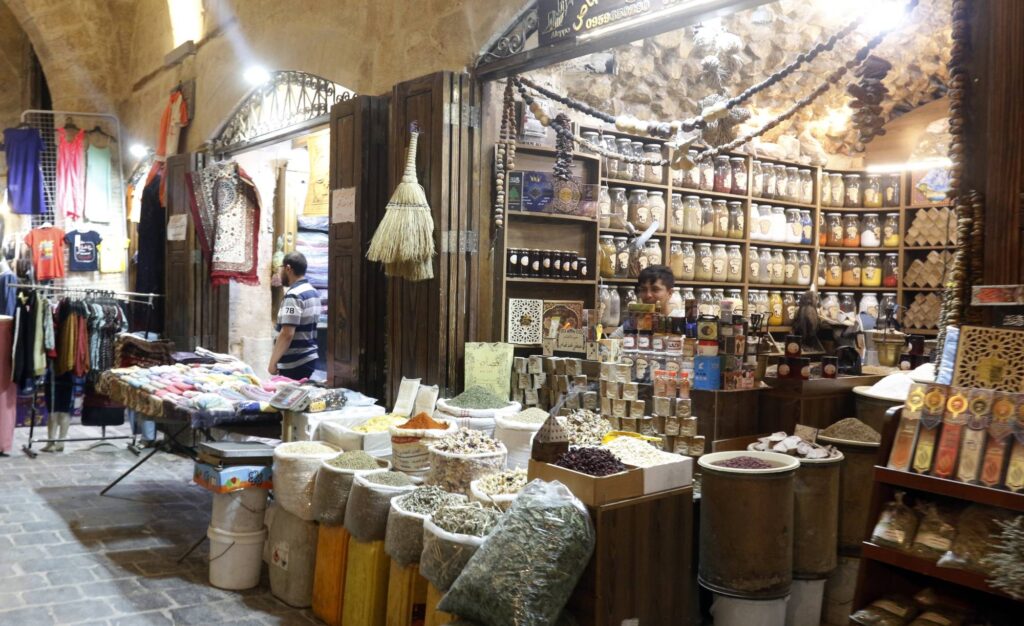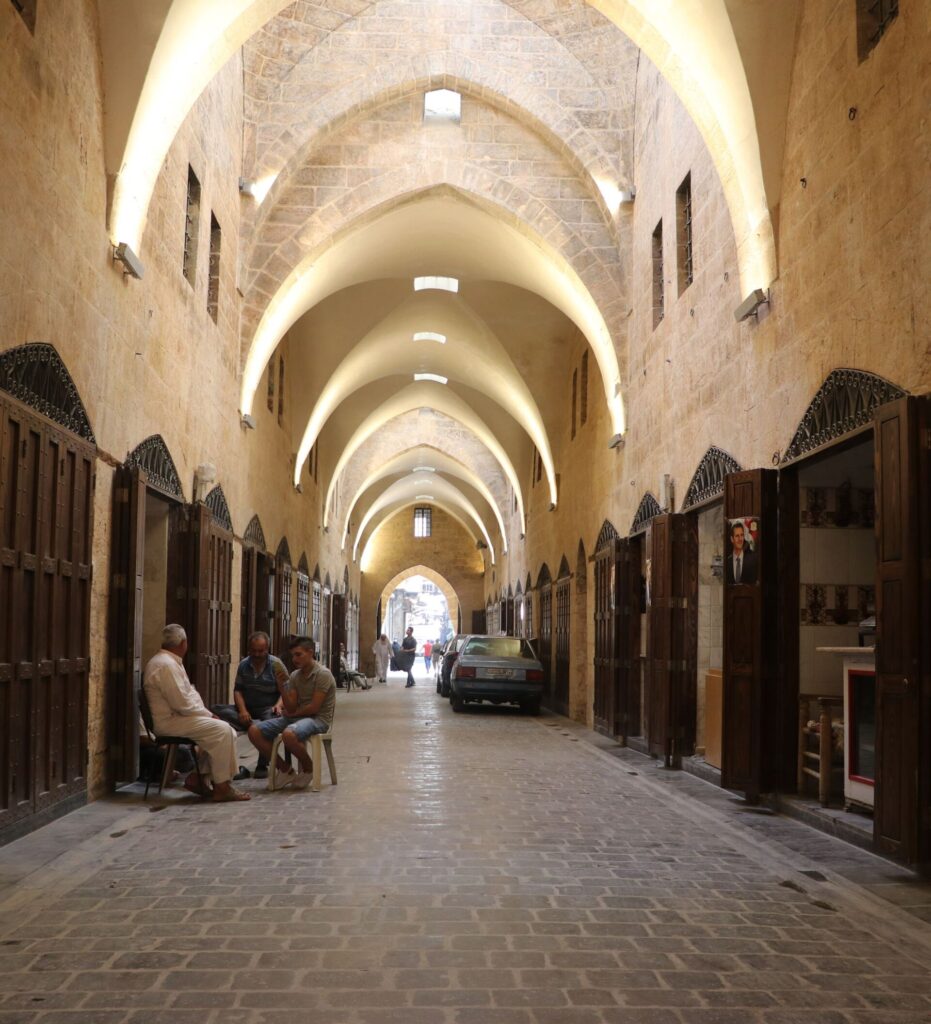The Al-Madina Souq in Old Aleppo is considered the longest covered market in the world, comprising more than 40 sub-markets and stretching continuously for nearly 13 kilometers. It forms part of the Old City of Aleppo, which is listed as a UNESCO World Heritage Site.
These markets form an interconnected network of sheltered alleyways and feature small domed pavilions crowned with openings (qumriyas) that allow natural sunlight to filter in.
The market was initially established during the reign of the Mamluk Sultan Qansuh al-Ghuri. It was later expanded by the Ottomans, who added several caravanserais—among them Khan al-Shuna and Khan al-Qattan—designed for storing goods and providing resting places for merchants.
In September 2012, a fire engulfed about 1,600 shops in the market and destroyed several wooden domes, although the market’s stone structure remained resilient.
The “Revive Aleppo Souqs” initiative was launched in 2017, training 400 craftsmen in the techniques of decorative brickwork and triangular arches. The Souq of Al-Nuhasins was reopened in 2021, and the restoration of the remaining commercial markets is currently underway.
Today, visitors discover traditional crafts such as doll embroidery, laurel soap making, and the distillation of Damascene rose water. Interactive panels in both Arabic and English explain how the historic link between an Indian caravan and Antiochine silk turned the market into a global export hub.








